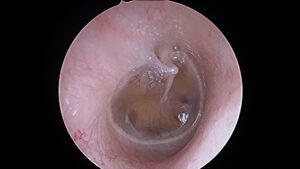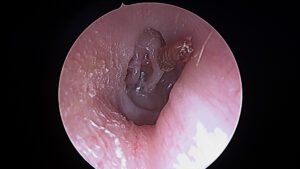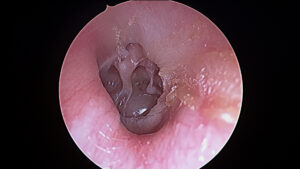The eustachian tubes are complex valves that connect the middle ear and the nasopharynx that maintain optimal pressure within the middle ear that allows the proper vibration of the tympanic membrane. This function is affected by any inflammation of the nose and sinuses, whether that be infective or allegic. Mechanical blockage in the nasopharynx (back of the nose) by enlarged adenoids (especially common in children) and in rarer cases such as benign and malignant tumours also play a role. There are some cases where no specific cause is found but the tube still is dysfunctional.
Most of the time this is self resolving following an URTI, but often nasal saline sprays, decongestants and steroids with autoinflation can help.
Recalcitrant cases then require intervention that can include increasing the intensity of topical nasal treatments, ventilation tube insertion, adenoidectomy and occasionally balloon dilatation are considered.
In more severe cases severe eustachian tube dysfunction can lead to collapse of the tympanic membrane and erosion of the middle ear structures, and further still the formation of cholesteatoma. This will necessitate surgical intervention.



